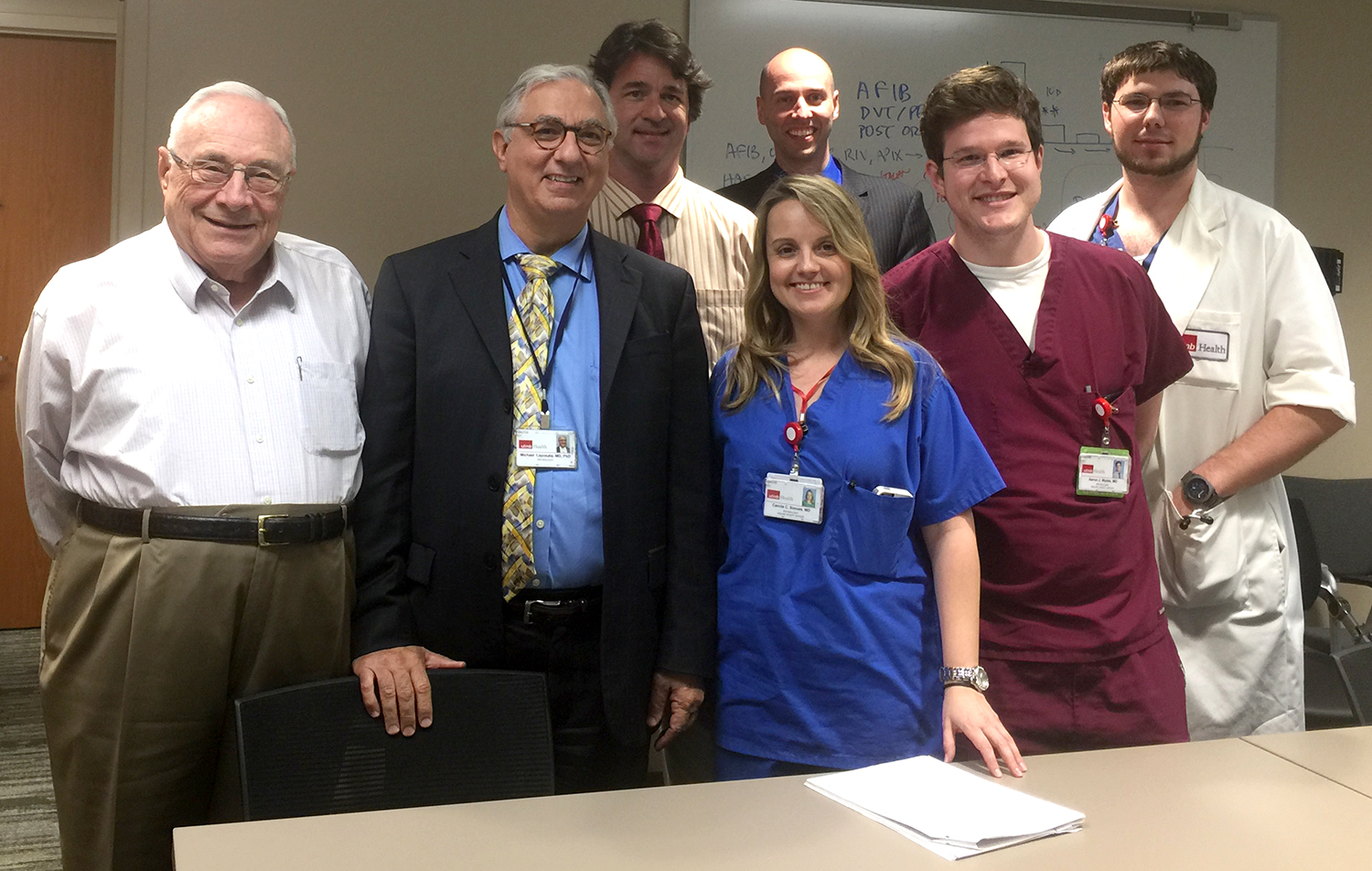
Michael Laposata, MD, PhD, vividly remembers an exchange he had with an internal medicine resident back in 1984.
“I was a first-year clinical pathology resident at the time and he asked me a simple lab test question; he didn’t know how to further evaluate an abnormally prolonged clotting test for a patient with unexplained bleeding,” said Laposata, professor and chair of UTMB’s Department of Pathology. “It surprised me.”
Laposata realized then that he had knowledge about making a diagnosis that the internal medicine resident—and most residents in other specialties—didn’t have. If the two hadn’t talked, the resident said he would have “guessed” which tests to pick and what the results meant.
Since that conversation more than 30 years ago, Laposata has made it his mission to eliminate guesswork by creating diagnostic medical teams, or DMTs. The teams are designed to offer healthcare professionals assistance in selecting appropriate diagnostic tests and interpreting results for individual patients. It’s a collaborative approach, with pathologists,clinical laboratory scientists, expert physicians and others all sitting at the table.
“The bottom line is that if you or a loved one is seriously ill with an unknown diagnosis, you want an expert in the field with current knowledge directing your diagnostic evaluation in real-time and explaining it all to you,” said Laposata. “DMTs effectively bring pathologists and lab scientists to the bedside, helping physicians order the correct test for the right patient at the right time, and then using the test results to select the most appropriate treatment.”
Before joining UTMB nearly three years ago, Laposata spearheaded DMTs at several institutions, including Vanderbilt University, where DMTs were formed for coagulation disorders, blood cancers, infectious diseases, endocrine-related hypertension, transfusion medicine and more. The teams were a success—with data showing improved patient outcomes, shorter hospital stays and reduced health care costs.
Now, Laposata is bringing his passion for diagnostic teamwork to UTMB. He formed a coagulation DMT a year ago, which meets every afternoon to go over complex patient cases. Dr. Jack Alperin, a hematologist and associate director of the UTMB Blood Bank, Dr. Aristides Koutrouvelis, a critical care anesthesiologist, Dr. Chad Botz, director of the Special Coagulation Laboratory, several pathology residents and visiting physicians join Laposata in a conference room in the Clinical Services Wing, where they pull up patient records and provide diagnostic conclusions and information to physicians needing their guidance.
With clinical lab testing options continuing to grow and becoming more complex, Koutrouvelis said it’s not always clear what the best test is for a patient.
“It’s almost impossible for clinicians to practice the most advanced medicine without a team like this that stays on the cutting edge,” he said.
For example, there are at least a dozen tests with the word “vitamin D” in the title presented to physicians who simply want to know if their patient is vitamin D deficient. So which test is the best test? Koutrouvelis said the DMT proves its worth in those instances.
“It allows for a number of people to give their different perspectives so we can optimize patient care and do so in a collaborative way,” he said. “I’ve seen situations where there has been a cost savings because the proper labs were done and the proper meds were given. There’s a patient safety impact, as well. I’ve had several patients with a coagulation abnormality that we were able to give a life-saving product because we worked together to come up with the best possible treatment.”
Laposata said feedback from physicians has been positive so far. In the future,he hopes to create a UT System-wide group of experts in all major areas of clinical and anatomic pathology and have DMTs for dozens of clinical areas to bring diagnostic experts electronically to the bedsides of all patients in Texas. It’s a big task, but Laposata said he’s up to it.
“With an estimated 64,000 people in the U.S. dying from diagnostic errors every year, something has to be done. I haven’t lost my enthusiasm. It may take a while to effect major change, but I’m going to work on this until I can’t do it anymore.”